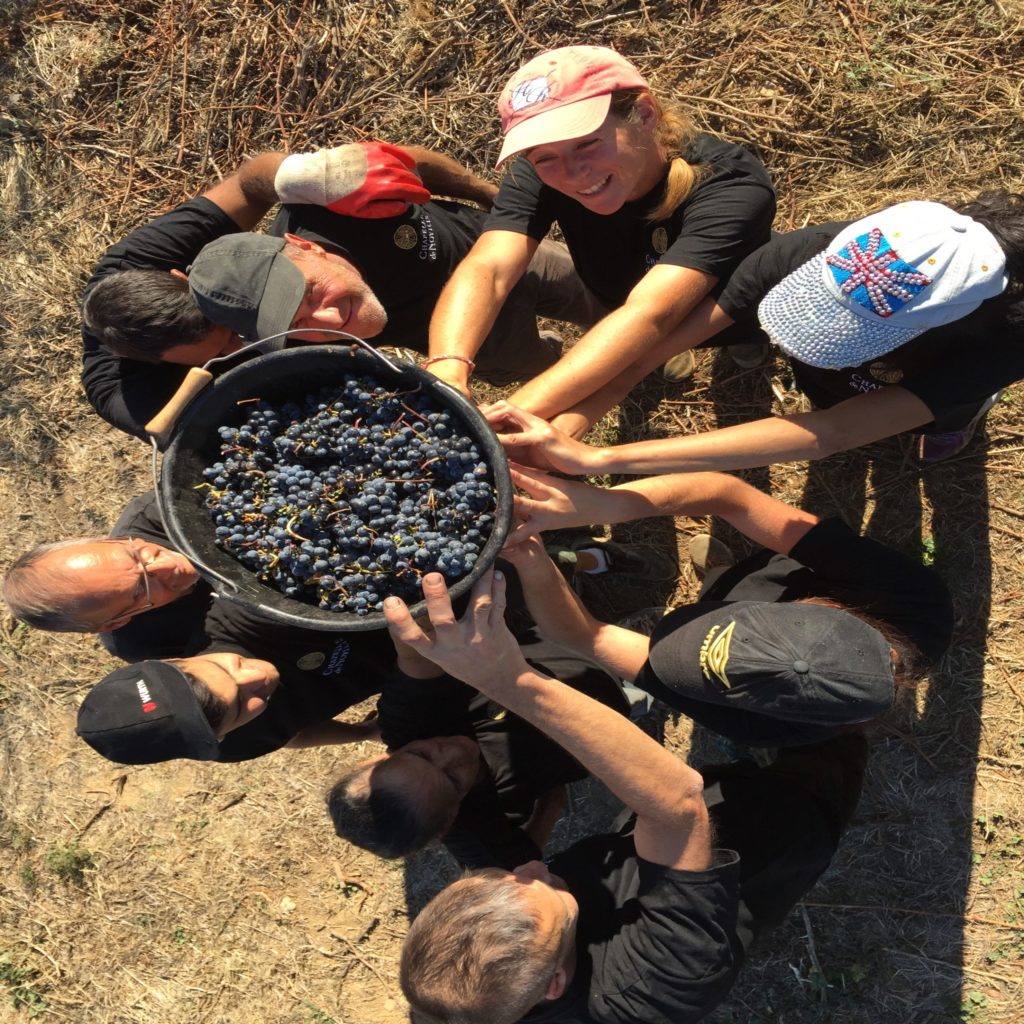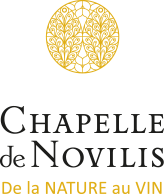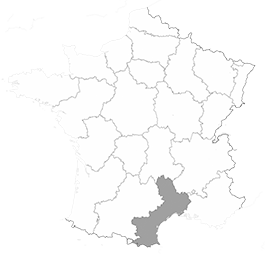
Premium organic wines
At CHAPELLE de NOVILIS, time spent in the vineyard and in the cellar is a faithful ally of excellence


A terroir located in the heart of the Languedoc vineyard
The vineyards of CHAPELLE de NOVILIS, more than half of which were planted before the 80’s, cover 16 hectares within the protected geographical indication (PGI) Côteaux d’Ensérune, in the Hérault, in the heart of the Languedoc vineyards.
Climate and terroir
They benefit from a rather exceptional micro-climate due to the influences of the sea, located 15 km to the south, and foothills of the central massif, the Caroux, 50 km to the north. These favorable weather conditions give our wines a lot of freshness.
The soils are mainly clay-limestone and deep. Some plots are old river terraces in pebbled pebbles. These profiles allow our vines deep roots and facilitate the flow of the water they need to lead their grapes to perfect maturity.
The tramontana ensures a dry climate which limits the massive attacks of mildew, thus promoting the control of the health condition of our vines in a natural way.
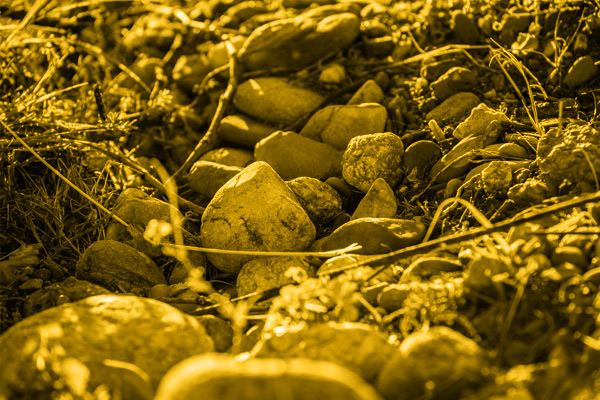

A mosaic of vines on clayey-limestone soil

Our Whites (30% of our plots)
Vermentino
… for Italians and Corsicans, or Rolle in Provence, in any case a southern grape variety – is an extraordinary celestial grape variety, aerial, luminous.
- Vermentino young vine: planted in 2014. The Vermentino has entered the composition of NEUS rosé (15%) for the first time on the vintage 2016 and in the composition of NEUS blanc in 2017 to which it brings a magnificent and fresh aromatic expression of Citrus and white flowers. Harvested late August / early September
- Vermentino adult vine: planted in 1993. Older, this vine offers a little more aroma of white fruits. Vermentino gives NEUS white (80%) its citrus freshness, sometimes even its minerality and NEUS rosé (15%) a very beautiful aromatic complexity. Harvested late August/early September.
Marsanne
… is native to the Rhone Valley. Because of its high tannic load, it can either bring a lot of hardness to the wine or conversely a great pleasure. It is this complex balance that is played in the cellar.
- Marsanne is beautifully suited for barrel-keeping.
- Marsanne brings to NEUS white (20%) its body, its structure, its complexity and its depth and to EVOLUS white -pure Marsanne, all its fineness and its sweetness. Harvested at the end of August.
Viognier and Grenache Gris
… planted in 2014, they enter as early as 2017 into the composition of NEUS white to bring roundness, notes yellow fruits (Viognier) and finesse (Grenache Gris). Harvested late August/early September.
Our Reds (70 % of our plots)
Our grape varieties typical of southern France
Cinsault
Seen as the Pinot Noir of Languedoc! It is often vinified in pink and rarely in red because of its large volume capacity and its very fragility. Indeed, reaching a point of perfect concentration on this grape variety requires an important manual work:
- Green harvest in July – elimination of half of the grapes to allow the vineyard to be able to carry out those that remain at a high level of concentration, to ensure aeration between the clusters in order to limit the diseases.
- Demanding manual sorting at harvest time to eliminate the grains which don’t resist the first autumnal rains – between 20 and 30% of berries are eliminated.
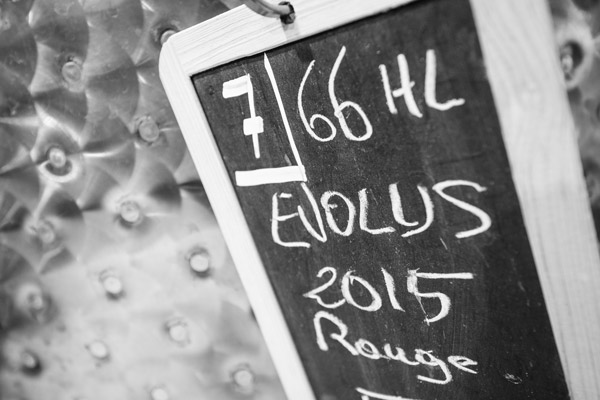
We harvest the Cinsault at 3 different times according to the wine for which it is intended :
- early September for NEUS rosé,
- mid-September for NEUS red and end September,
- or even early October for ALTIS.
The Cinsault brings NEUS rosé (45%) its freshness, contributes to its nicely regulated note, supports the general level of complexity and lengthens the spicy finish.
It gives NEUS red (15%) its freshness and its crunchy red fruit. As for ALTIS (60%), it brings its freshness, its elegance, its aromatic precision on beautiful cherry notes.
Carignan
offers a very nice freshness to the red wines. It can give concentrated and fine wines when it is vinified without the raffle (stem that carries the grape berries). We harvest it in 2 stages :
- Mid-September for NEUS red.
- End of September for EVOLUS red.
Our Carignan was planted in 1983 on a ground in terraces of pebbles rolled – ancient bed of river. It brings NEUS red (25%) its freshness and notes all in lightness on pepper, spices and liquorice. It gives EVOLUS red (40%) its freshness and its unctuosity allowing the Merlot and the Cabernet Sauvignon to associate perfectly with it.
Originally from the city of Alicante in Spain, Alicante is also very well adapted to the climates of the south. It is one of the rare grape varieties whose peculiarity of the pulp is to be coloured with a beautiful deep violet.
Very small yield of 18hl/ha. The Alicante gives ALTIS (40%) its concentration, density, depth and spicy notes. Assembled with the elegance of Cinsault, it brings its structure to ALTIS.
ALICANTE
Originally from the city of Alicante in Spain, Alicante is also very well adapted to southern climates. It is one of the rare grape varieties whose peculiarity of the pulp is that it is colored in a beautiful deep purple.
Very low yield of 18hl / ha.
Alicante gives ALTIS (40%) its concentration, density, depth and spicy notes. Combined with the elegance of Cinsault, it brings its structure to ALTIS.
Tempranillo
Grape – vinified for the great red wines of the Rioja valley in Spain, cannot be magnified in reds under our insufficiently warm climate but brings to our NEUS rosé (40%) its very expressive and acidulous red fruit notes and a very nice freshness.
Our grape varieties typical of the south-west France
Cabernet Franc
… is one of the oldest red grape varieties of Bordeaux which is also planted to the north of the Loire. Planted in 2013 at CHAPELLE de NOVILIS. Assembled at 10% for EVOLUS red since the vintage 2015, it amplifies the complexity of this wine and gives it its beautiful peppery notes and spicy finish.
Merlot
Appeared at the end of the 18th century, merlot is planted in most Bordeaux vineyards. Its plantation in Languedoc has made it possible to discover what this grape variety offers in warmer and more water restricted climate.
It gives our wines their greedy notes. The Merlot offers red NEUS (45%) its red fruit, its spices and a nice middle of the mouth sensation of sweetness. It brings EVOLUS (20%) its greedy and fruit marmalade notes.
Cabernet Sauvignon
… is one of Bordeaux’s leading grape varieties, renowned for bringing structure to the wine. Planted in 1984 the structure of Cabernet Sauvignon expresses itself fully for EVOLUS red (40%) with spices notes and complexity. As for NEUS red (15%), Cabernet Sauvignon reinforces its tension in the mouth.
